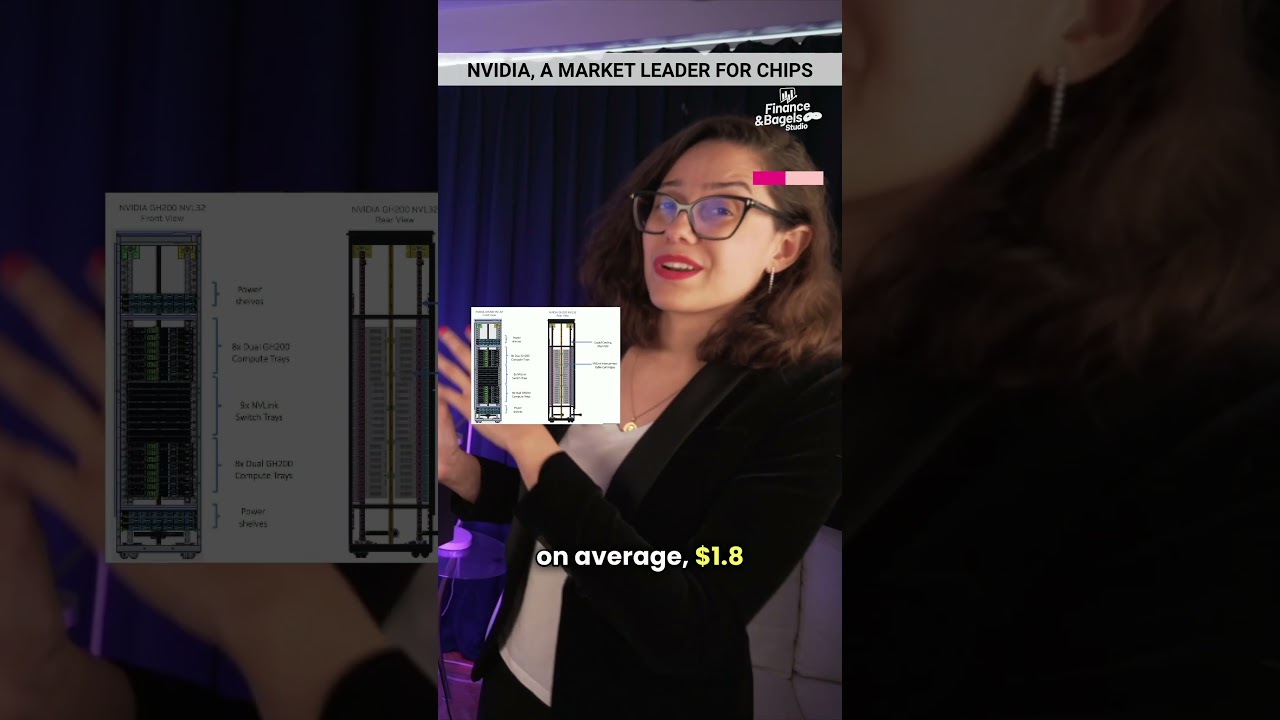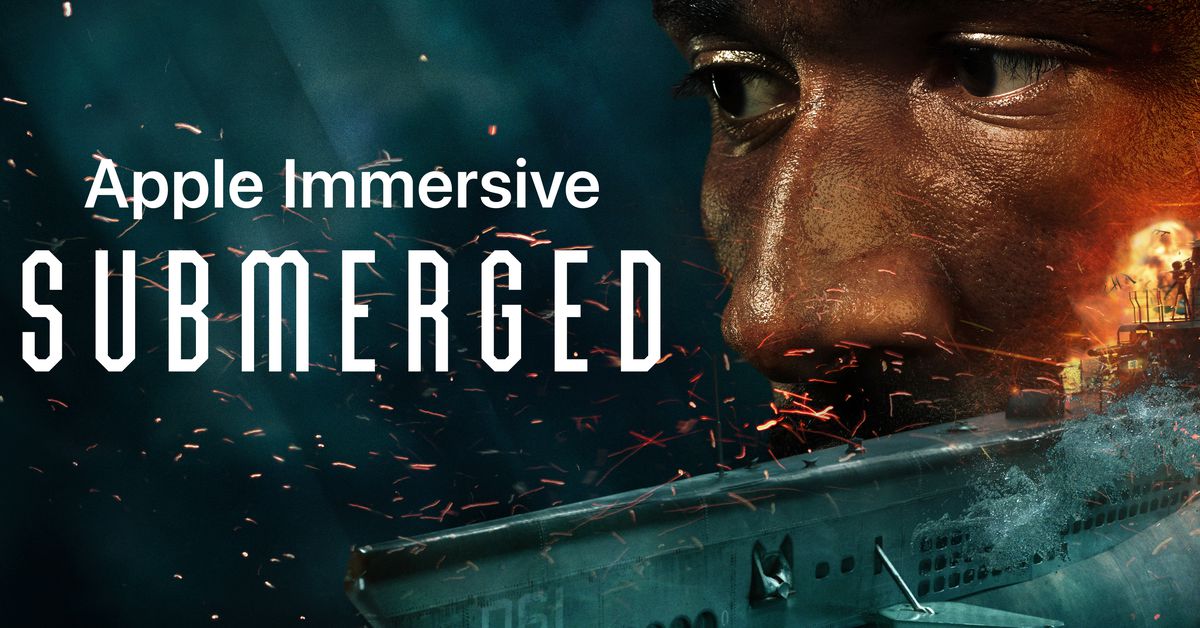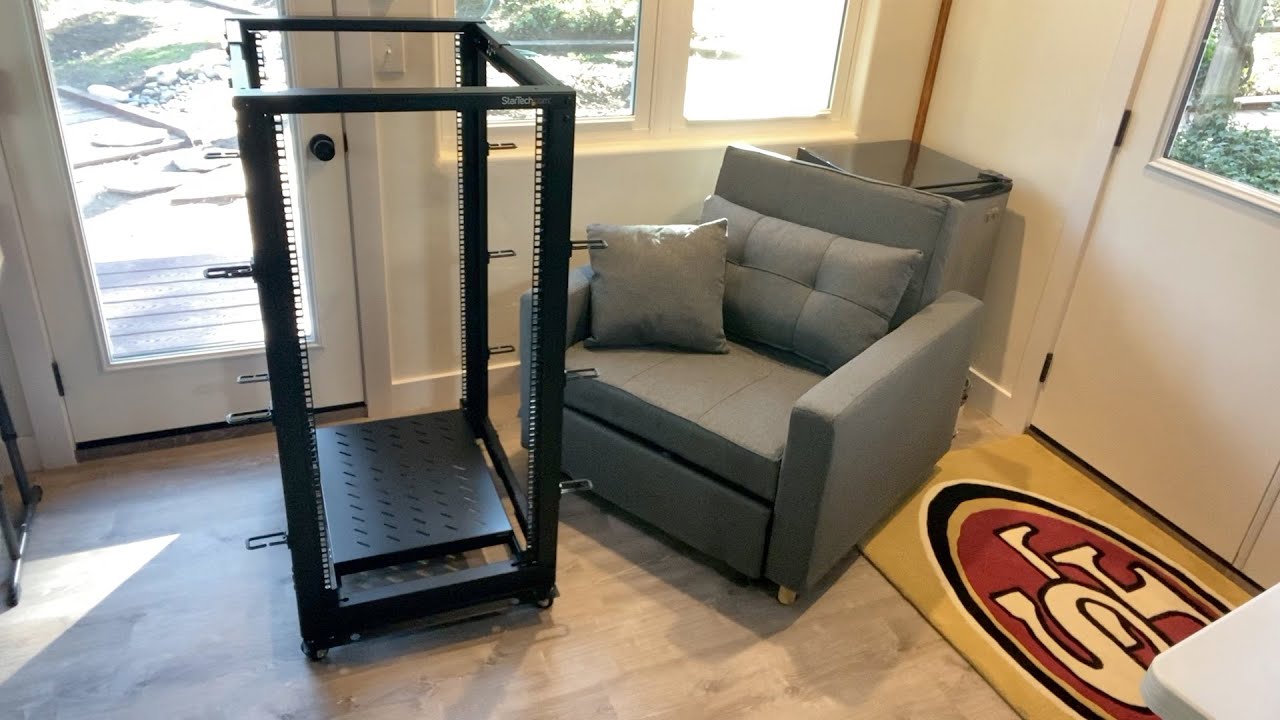I don’t like submarines. The idea of being trapped, several hundred feet underwater, in a narrow, creaking death trap? No thanks. I already knew that going into a screening of Submerged, the first scripted short film shot in Apple Immersive Video for the Vision Pro. Now that I’ve seen it, I’m triply sure.
Technology
Relyance lands $32M to help companies comply with data regulations

As the demand for AI surges, AI vendors are devoting greater bandwidth to data security issues. Not only are they being compelled to comply with emerging data privacy regulations (e.g. the EU Data Act), but they’re finding themselves under the microscope of clients skeptical about how their data is being used and processed.
The trouble is, where it concerns tightening data security practices around AI, many orgs aren’t in a position to execute well. According to a survey from BigID, a data control platform, half of organizations rank data security as their top barrier to implementing AI.
Hailing from the app engineering and legal sectors, Abhi Sharma and Leila Golchehreh were well-versed in the challenges at play here. Confident they could build something to address the data security conundrum, the pair launched Relyance AI, a platform that checks if a company’s data usage is aligned with governance policies.
“The concept of how we would build Relyance came to us one evening when we were catching up over pizza in San Francisco,” Sharma told TechCrunch. “Although we came from two very different backgrounds, together, we realized that more could be done to ensure visibility in an organization’s data processing.”
Golchehreh is an attorney by trade, having previously served as senior counsel at Workday and autonomous car startup Cruise. Sharma, a software dev, was a platform engineer at AppDynamics before helping to found FogHorn, an edge AI platform that Johnson Controls acquired in 2022.
Sharma says that most companies face three main hurdles to AI adoption: a lack of visibility to data in AI, the complexity of how data is handled, and the rapid pace of innovation. All these contribute to reputational risk, Sharma says — and open companies to legal threats.
Relyance’s solution is an engine that scans an org’s data sources — such as third-party apps, cloud environments, AI models, and code repositories — and checks to see if they’re in agreement with policies. Relyance creates a “data inventory” and ‘data map,” which it syncs with customer agreements, global privacy regulations, and compliance frameworks.
“Relyance enables organizations to monitor external vendor risks,” Sharma said, “while its data lineage feature tracks data flows across applications to identify potential risks proactively.”

Now, Relyance isn’t executing on a totally novel concept. Sharma admits that OneTrust, Transcend, Datagrail, and Securiti AI are among the vendors that compete with it in some way. For example, Datagrail offers automated risk monitoring tools that help companies build third-party app risk assessments quickly.
But Relyance appears to be holding its own. Sharma claims that the business is on track to double annual recurring revenue this year, and that Relyance’s customer base — which includes Coinbase, Snowflake, MyFitnessPal, and Plaid — grew 30% in H1.
Setting the stage for further growth, Relyance this month closed a $32 million Series B round led by Thomvest with participation from M12 (Microsoft’s venture fund), Cheyenne Ventures, Menlo Ventures, and Unusual Ventures. Bringing the startup’s total raised to $59 million, the new funds will be put toward growing Relyance’s team to 90 employees by the end of the year.
“We decided to raise funds because the demand for AI continues to grow and new privacy and AI regulations are being put into place globally,” Sharma said. “Our hiring efforts will primarily focus on expanding our engineering team and increasing our go-to-market capacity to support our product development and growth momentum.”
Servers computers
NVIDIA, price of 1 chip? price of 1 server rack? #ai #nvidia #nvda

@FinanceAndBagels FULL VIDEO HERE .
source
Technology
Submerged is everything impressive and isolating about the Vision Pro

Written and directed by Oscar winner Edward Berger, Submerged takes place inside a WWII submarine that’s under attack. It follows the crew as they try to escape a sinking submarine. I, however, was seated comfortably in 2024 on a couch at Apple’s demo space in Manhattan. There weren’t any other theatergoers because I was going to strap the theater to my face. It was a little weird. At least, until the film got going. Then, I, too, was inside a WWII submarine.
Watching an immersive film inside the Vision Pro is an odd thing. On the one hand, it’s hard to forget you’re in a headset. But, unlike a regular film, I have a ghostly sort of agency inside the narrative. The action can be happening with the main characters, but I’m not obligated to watch them. You can instead focus on the extras in the background. I can — and did — occasionally choose to turn my head to stare at the rivets in the submarine’s metal walls or beads of condensation in a torpedo tube (also, rudely, a roach skittering across the floor). Sometimes, I’d turn around to see if this Submerged world had 360 degrees like the real one. Spoiler: it doesn’t. This fictional world spans 180 degrees, and once you reach the border, it fades to black.
The experience feels like a cross between playing a video game and viewing Sleep No More, an immersive version of Macbeth where the audience traipses through a creepy hotel as the play unfolds around them. Scenes move slower, as if you’re being invited to gawp at your surroundings. At the same time, you’re not fully free to explore. There’s still a story that Berger is trying to tell — you’re just along for the ride.
All of that is a natural part of adapting traditional filmmaking to a more immersive 180-degree field of view. “That frame is very large and you need to fill that frame with things that happen, things that could be of interest to the audience,” Berger says. “Every extra counts in this, every piece of equipment, every piece of bursting pipe or element in the frame counts. You can’t really cheat.”
That wide field of view comes with its own obstacles. Mics and lighting have to be built into the scenery. Berger says he had to storyboard everything, create a short animated film based on that, and then watch it in the Vision Pro to get a sense for how the camera would move. Berger also wore the headset when filming started to figure out how shots would look.
The result is impressive. As water rushed into this fictional submarine, I could taste the faint memory of salt water on my tongue. When characters walked down narrow submarine corridors, I felt claustrophobic. During a scene where sailors shoved a torpedo into its launch tube, I instinctively stretched my hands out. For a split second, I thought they were loading it straight into my chest.
“My main agenda is to make you feel what the main character is feeling, to sort of have you go through what they’re doing,” Berger says. On that front, Submerged is incredibly successful. It’s when you remember you’re in a headset that the rest of the world comes rushing back in.
Watching the film, you become very aware there’s no one else experiencing this with you. There’s no one else gasping at harrowing moments. There’s no one to lock eyes with, as if to say “Whoa, did you see that, too?” If you were to SharePlay this, you’d just see the ghostly Persona of a friend who isn’t actually there. And then you’d miss out on the whole immersive aspect. When you think about it that way, Submerged is something you have to experience alone.
Watching the film, you become very aware there’s no one else experiencing this with you
Owning (or borrowing) a Vision Pro is also the only way to see Submerged. That’s inherently lonely. The only people I’ve really been able to chat about this experience with were Apple employees and Berger himself. Now that the film is available, I’ll have to wait for the two people I know in real life with a Vision Pro to carve out time in their schedule to see it. When I try to explain it to my spouse, they are unmoved.
Ostensibly, Apple wants these immersive films to serve as a selling point for the Vision Pro. Come, spend $3,500, and see for yourself what the magic is all about. There’s a logic to it. Submerged is truly a technologically impressive proof-of-concept for high-quality immersive content. It’s just also a hard experience to share. I can’t say with a straight face that this is the killer reason anyone should buy one of these things, especially since this was only a roughly 17-minute film. That’s long enough for things to feel snappy and fresh. I’m not sure how well the immersive aspect would hold up over a two-hour feature.
“Not every movie is going to be made on these headsets. It’s not necessary. It would be a waste of resources and waste of time,” Berger acknowledges. Instead, he sees the Vision Pro as another tool in the belt. “Not every movie is supposed to be for every medium. But if I have the right story, I think, ‘I’m excited about telling this and about pushing the medium forward.’”
That’s sort of the quagmire all mixed reality tech is stuck in. It can be magical. When you try it, you can see why some people are inspired and excited. And then, when you inevitably take the headsets off, it’s hard to explain to anyone why the world inside the headset is better than the one outside it. “Pushing boundaries” isn’t all that convincing of a reason. Watching Submerged is like this, too. For all the artistry and technological prowess that went into making this film, I’ve never needed the Vision Pro to imagine how terrifying a sinking submarine could be. It’s just not necessary for immersing yourself in a good story.
Technology
Submerged is Vision Pro’s claustrophobic thrill ride that’s short on depth but long on immersion

Claustrophobia and barely contained panic were my two overriding emotions as I experienced Apple’s first-ever immersive narrative short film on its Vision Pro mixed reality headset.
The aptly titled Submerged, which arrives on Vision Pro headsets around the world today, tells the harrowing 17-minute tale of a World War II submarine tasked with tracking ships in enemy waters.
If you’re even remotely a World War II history buff or film fan, you’ve heard of or seen tales like this before but I doubt you’ve seen it in this fashion.
Written and directed by award-winning director Edward Berger, the film tells a tight tale of a submarine crew under siege. It’s remarkable not necessarily because the story is new or nuanced but because of how it employs immersive video techniques to put you in the middle of the action.
When I watched the film, I could look around the tight cabin – an expertly built set that, owing to the Vision Pro’s high-resolution displays and the close confines – used all metals to make the recreation remarkably realistic.
The story starts slowly to, perhaps, help introduce you to the main protagonist, crewman James Dyson (expertly played by Jordan Barton), his shipmates, and the mundanity of their existence some 400 ft below the surface of the sea.
One thing I noticed was how Berger switched back and forth between using the 360-degree view capabilities of a VR headset (all shot on Apple’s proprietary camera) like the Vision Pro, and pulling the focus in tightly to direct your gaze. The closeups of Barton were tight enough that I could make out the pores on his face.

I often find the experience of watching a movie in Vision Pro calming almost to the point of sleepiness. As the early minutes of the short film plugged along, I found my attention waning – that is, until the ship was struck by something and shook wildly. I was so startled that I almost jumped off the couch I was sitting on.
From that moment forward, the film seemed to press in on me and its characters. I enjoyed Berger’s varied propositioning of the camera. At one point a 20-ft torpedo was essentially loaded into my chest – at least from my point of view. At another, the main character was staring warily right into my eyes.
When one of the torpedo tubes burst open and flames and sparks formed overhead, all hell broke loose. Within seconds there were geysers of water shooting into my and the main character’s faces.
As the water poured in and rose around us – yes, I soon felt like a part of this – my unease grew. It was clear the water was just below my nose. I’m a little claustrophobic in real life so I was soon repeating a mantra of “no no no no” in my head. To achieve some of this effect, they shot the film in a giant custom-built tank and in open water where they slowly submerged some parts of the set.
There’s virtually no exposition so I never entirely understood how [spoiler alert] the enemy found them, attacked, and eventually destroyed their sub. Miraculously, all the crewmen survived. This being an Apple immersive film, perhaps I shouldn’t be surprised.

Apple is still mainly interested in delivering relatively brief immersive experiences. It’s queued up a new NBA All-Star weekend movie that, while just four minutes or so long, truly puts you in the middle of the three-day event. I don’t even follow basketball but found it entertaining (the basketball to my face was a nice touch).
Apple is also lining up more Adventure and Elevated episodes, including one for Maine. There are more concert experiences on the way, like one from The Weekend and another from R.A.E.
I’ve enjoyed most of my immersive experiences and, if you have a Vision Pro, it’s one of the coolest ways to use your mixed-reality headset. Are they and this entertaining and somewhat anxiety-inducing film reason enough to spend $3,500 for a Vision Pro? I’ll leave that up to you.
I naturally had a lot of questions about the creation of this immersive, short film, so I turned to the director Edward Berger, who also directed the Oscar-winning All Quiet on the Western Front, for a deeper look at how he created Submerged and the choices he made to bring it to Vision Pro. Our conversation has been edited and shortened for clarity.
A conversation with the director
I saw the behind-the-scenes video short, and what I noticed is that during the making of the film, you appeared to be wearing the Vision Pro headset. So I guess I was curious if that was designed so you would have a feed and know exactly what the scene was going to play out like for people who were wearing headsets themselves.
Berger: In our shooting experience, we designed the pipeline so that we were able to watch the take through the Vision Pro and experience life as the actors were doing it.
I started changing my habit a little bit during production because you learn your brain rewires very quickly to the Apple Vision Pro. It learns the tools, it learns the visuals, it learns the techniques, very quickly how it feels, what what you can use. And so maybe halfway through the shoot, I sort of alternated between just watching the actors on my monitor, [we had] two monitors. One was just the field division and one was the entire 180 degrees sort of whatever was in the frame everywhere.
So, I watched those just to – sometimes it felt a little bit more direct to me and I could imagine the effect that I would have in the Apple Vision Pro because I had learned it within the previous three weeks of using this tool.
Were there any technical surprises as you were preparing to do this or even as you were doing it?
Absolutely. I mean, not surprises so much because we tested it extensively, but certain things that we knew, we’re gonna have to push the limit here in terms of movement, camera movement. How much can you shake it? What kind of dolly moves, crane moves can you make? Can you do a three-axis move, or is it better just to move on one axis? Just do push-ins or trackbacks or things like that.
So just all these things you need to test to know how is it gonna feel when you put on the put on the glasses, but also, you know, very quickly it became clear to us, okay, well where are we gonna hide the equipment? You know, where are we gonna put the lights? Where are we gonna put the microphones? Very quickly we realize, okay, we’re gonna have to integrate everything into the set.
The set looked great, by the way. It looked looked realistic. Had you ever shot a VR film before?
No. First experience, first stereoscopic experience. I’d never even put on any VR glasses. I mean, except for in a museum, maybe for a few minutes, when there’s a long line behind a view, so it was a wonderful way of getting to the technology diving into it, exploring ways of telling a story in a different way.
Do you now own a Vision Pro?
Absolutely, and I use it a lot. It’s a great great way to watch movies.
How long was the entire shoot?
I think we shot for 10 days. Tested maybe for a week and then shot for 10 days.
It sounds like it took more planning maybe than a traditional movie because of things like having to hide equipment.
Yeah, it did take a lot of planning. It took quite a while – but you know, also we had a tight timeline. So in a way, it was like we had to work around the clock to make this film to be able to premiere it right now for you. I mean, we shot it in April and it has a long post-production process. Yeah, a lot of planning, but a lot of around-the-clock work as well.
Did you get to show it to Tim Cook?
I mean, I know he watched it. I wasn’t present in the room when he watched it.
With the amount of preparation and the way you had to manage things, was there any room for improvisation?
No. I’m not, in general, I’m not a big fan of improvisation. I like movies where I can see that the filmmaker has put a lot of thought into the design of it, into the making of it. To then react on the day, I don’t call improvisation where I said, okay, let’s make it better. We have this shot planned, but actually it would be much better from here with the actors doing this, let’s react to that. But I like when movies are well thought through and precise and so I’m not the right person to ask that question.
I’m sure there’s somebody else, an improvisational filmmaker who will put the Apple Vision Pro to great use.
I noticed in the shooting in the movie that sometimes I could look around and see a lot of stuff, and other times my view was directed, narrowed in a way focused. So I was just curious how you decided to make that choice where sometimes we were experiencing it fully and sometimes we were just like – the main character was really in our face and that was kind of what you saw. If you look to the edges, they were kind of darkened.
It is. I mean, it’s in a way like in a traditional movie, I would say it’s the use of a closeup. When you say, okay, I really want it to have an emotional impact for the viewer, have them be very close to our character to experience what they are experiencing. And so you direct the eyes, the gaze like that, but usually, I mean, this device, the great thing is that the audience can design their own experience.
It’s almost like theater in a way. You have very wide shots, not your field of vision necessarily, but to the left, right, up and down, there’s a lot beyond the frame that you can see, and hear, and to then use that entire frame, the entire 180 degrees to fill it with sound or other action like a bursting pipe or steam coming somewhere, was super interesting to us, and therefore you also need more time to explore these things. You can let the shots linger so that you, Lance, can look around, you know, that we can give you the time and space to do that.
You might also like…
Servers computers
Network Rack 42U #networking #compterinformation
Technology
US and UK announce online child safety partnership

 Getty Images
Getty ImagesThe US and the UK have announced what they say is their first joint agreement aimed at keeping children safer online.
It will see the setting up of a joint online safety working group to share evidence and expertise, and study the impact social media has on children.
UK Technology Secretary Peter Kyle said the agreement would turn the two countries’ “historic partnership” towards “delivering a safer online world for our next generation.”
But campaign group Smartphone Free Childhood said it was insufficient and parents “don’t have time to wait and see whether this UK-US agreement makes any difference when their children’s futures are at stake.”
However, others argue more evidence does need to be gathered in relation to online harms to guide any future policies.
“Policies and guidelines to support young people in navigating their digital world need to be based on robust evidence, but to date we haven’t had much success in establishing cause and effect when it comes to impacts on wellbeing,” said Prof Pete Etchells of Bath Spa University
Announcing the agreement, the UK government acknowledged there was “limited research and evidence on the causal impact that social media has on children and young people”.
It committed to consider ways access to more data held by big tech firms could be given to researchers.
‘Further and faster’
The agreement was announced in a joint statement between the two countries.
At its heart is the joint working group which will work on areas including “promoting better transparency from platforms” and “better understanding the impacts and risks of the digital world on young people, including new technologies like generative AI.”
They also said they expected tech platforms to go “further and faster” to protect children.
“As more children across the U.S. and around the globe have access to online platforms for online learning and social media, there is also increased risk to this exposure,” said U.S. Secretary of Commerce Gina Raimondo.
“That is why we are taking the necessary steps in the United States, and with our UK partners, to protect children’s privacy, safety, and mental health,” she added.
However, Smartphone Free Childhood said action was needed sooner, so it has launched a campaign calling on the UK government to ensure that children don’t have access to their mobile phones at school.
The campaign group argues that “further delay” from the government would make the UK looking “increasingly behind” other European countries who have strengthened restrictions.
Currently government guidance says that: “All schools should prohibit the use of mobile phones throughout the school day – not only during lessons but break and lunchtimes as well”.
However, the government so far says it has no plans to ban smartphone use for the under-16’s.
The UK’s Online Safety Act does place duties on online platforms to protect children’s safety and put in place measures to mitigate risks.
But this is not yet fully in force. Guidance for firms on how to comply with the new legislation is still being produced by the communications regulator Ofcom.
Servers computers
Home Lab Server Rack Review

Let’s talk about server racks for a minute.
This is a review on StarTech.com 25U Open Frame Server Rack – 4 Post Adjustable Depth (23″ to 41″) Network Equipment Rack w/ Casters/ Levelers/ Cable Management (4POSTRACK25U)
-

 Science & Environment3 weeks ago
Science & Environment3 weeks agoHyperelastic gel is one of the stretchiest materials known to science
-

 Science & Environment3 weeks ago
Science & Environment3 weeks agoHow to unsnarl a tangle of threads, according to physics
-

 Womens Workouts2 weeks ago
Womens Workouts2 weeks ago3 Day Full Body Women’s Dumbbell Only Workout
-

 Technology3 weeks ago
Technology3 weeks agoWould-be reality TV contestants ‘not looking real’
-

 Science & Environment3 weeks ago
Science & Environment3 weeks agoMaxwell’s demon charges quantum batteries inside of a quantum computer
-

 Science & Environment3 weeks ago
Science & Environment3 weeks ago‘Running of the bulls’ festival crowds move like charged particles
-
News3 weeks ago
the pick of new debut fiction
-

 Science & Environment3 weeks ago
Science & Environment3 weeks agoITER: Is the world’s biggest fusion experiment dead after new delay to 2035?
-

 Science & Environment3 weeks ago
Science & Environment3 weeks agoHow to wrap your mind around the real multiverse
-

 Science & Environment3 weeks ago
Science & Environment3 weeks agoSunlight-trapping device can generate temperatures over 1000°C
-

 Science & Environment3 weeks ago
Science & Environment3 weeks agoQuantum ‘supersolid’ matter stirred using magnets
-

 News3 weeks ago
News3 weeks agoOur millionaire neighbour blocks us from using public footpath & screams at us in street.. it’s like living in a WARZONE – WordupNews
-

 Science & Environment3 weeks ago
Science & Environment3 weeks agoLiquid crystals could improve quantum communication devices
-

 Science & Environment3 weeks ago
Science & Environment3 weeks agoQuantum forces used to automatically assemble tiny device
-

 Science & Environment3 weeks ago
Science & Environment3 weeks agoWhy this is a golden age for life to thrive across the universe
-

 Science & Environment3 weeks ago
Science & Environment3 weeks agoPhysicists are grappling with their own reproducibility crisis
-

 Science & Environment3 weeks ago
Science & Environment3 weeks agoTime travel sci-fi novel is a rip-roaringly good thought experiment
-

 Science & Environment3 weeks ago
Science & Environment3 weeks agoLaser helps turn an electron into a coil of mass and charge
-

 Science & Environment3 weeks ago
Science & Environment3 weeks agoNuclear fusion experiment overcomes two key operating hurdles
-

 Science & Environment2 weeks ago
Science & Environment2 weeks agoX-rays reveal half-billion-year-old insect ancestor
-
Business2 weeks ago
Eurosceptic Andrej Babiš eyes return to power in Czech Republic
-

 News4 weeks ago
News4 weeks ago▶️ Hamas in the West Bank: Rising Support and Deadly Attacks You Might Not Know About
-

 Science & Environment3 weeks ago
Science & Environment3 weeks agoCaroline Ellison aims to duck prison sentence for role in FTX collapse
-

 Science & Environment3 weeks ago
Science & Environment3 weeks agoNerve fibres in the brain could generate quantum entanglement
-

 News3 weeks ago
News3 weeks agoYou’re a Hypocrite, And So Am I
-

 Sport3 weeks ago
Sport3 weeks agoJoshua vs Dubois: Chris Eubank Jr says ‘AJ’ could beat Tyson Fury and any other heavyweight in the world
-

 News3 weeks ago
News3 weeks ago▶️ Media Bias: How They Spin Attack on Hezbollah and Ignore the Reality
-

 Technology2 weeks ago
Technology2 weeks ago‘From a toaster to a server’: UK startup promises 5x ‘speed up without changing a line of code’ as it plans to take on Nvidia, AMD in the generative AI battlefield
-

 Football2 weeks ago
Football2 weeks agoFootball Focus: Martin Keown on Liverpool’s Alisson Becker
-

 News3 weeks ago
News3 weeks agoNew investigation ordered into ‘doorstep murder’ of Alistair Wilson
-

 Science & Environment3 weeks ago
Science & Environment3 weeks agoA slight curve helps rocks make the biggest splash
-

 Science & Environment3 weeks ago
Science & Environment3 weeks agoRethinking space and time could let us do away with dark matter
-
Business2 weeks ago
Should London’s tax exiles head for Spain, Italy . . . or Wales?
-

 MMA2 weeks ago
MMA2 weeks agoConor McGregor challenges ‘woeful’ Belal Muhammad, tells Ilia Topuria it’s ‘on sight’
-

 Science & Environment3 weeks ago
Science & Environment3 weeks agoA new kind of experiment at the Large Hadron Collider could unravel quantum reality
-

 Science & Environment3 weeks ago
Science & Environment3 weeks agoFuture of fusion: How the UK’s JET reactor paved the way for ITER
-

 Science & Environment3 weeks ago
Science & Environment3 weeks agoWhy we need to invoke philosophy to judge bizarre concepts in science
-

 Science & Environment3 weeks ago
Science & Environment3 weeks agoA tale of two mysteries: ghostly neutrinos and the proton decay puzzle
-

 Science & Environment3 weeks ago
Science & Environment3 weeks agoUK spurns European invitation to join ITER nuclear fusion project
-

 News3 weeks ago
News3 weeks agoIsrael strikes Lebanese targets as Hizbollah chief warns of ‘red lines’ crossed
-

 Technology2 weeks ago
Technology2 weeks agoIs sharing your smartphone PIN part of a healthy relationship?
-

 Technology2 weeks ago
Technology2 weeks agoQuantum computers may work better when they ignore causality
-

 CryptoCurrency3 weeks ago
CryptoCurrency3 weeks agoCardano founder to meet Argentina president Javier Milei
-
News3 weeks ago
The Project Censored Newsletter – May 2024
-

 News3 weeks ago
News3 weeks agoWhy Is Everyone Excited About These Smart Insoles?
-

 Science & Environment3 weeks ago
Science & Environment3 weeks agoMeet the world's first female male model | 7.30
-

 News3 weeks ago
News3 weeks agoFour dead & 18 injured in horror mass shooting with victims ‘caught in crossfire’ as cops hunt multiple gunmen
-

 Womens Workouts2 weeks ago
Womens Workouts2 weeks ago3 Day Full Body Toning Workout for Women
-

 Technology2 weeks ago
Technology2 weeks agoRobo-tuna reveals how foldable fins help the speedy fish manoeuvre
-

 Technology2 weeks ago
Technology2 weeks agoGet ready for Meta Connect
-

 Health & fitness2 weeks ago
Health & fitness2 weeks agoThe 7 lifestyle habits you can stop now for a slimmer face by next week
-

 Sport2 weeks ago
Sport2 weeks agoWatch UFC star deliver ‘one of the most brutal knockouts ever’ that left opponent laid spark out on the canvas
-

 Technology3 weeks ago
Technology3 weeks agoThe ‘superfood’ taking over fields in northern India
-

 Health & fitness3 weeks ago
Health & fitness3 weeks agoThe maps that could hold the secret to curing cancer
-

 Health & fitness3 weeks ago
Health & fitness3 weeks agoThe secret to a six pack – and how to keep your washboard abs in 2022
-

 Science & Environment3 weeks ago
Science & Environment3 weeks agoBeing in two places at once could make a quantum battery charge faster
-

 CryptoCurrency3 weeks ago
CryptoCurrency3 weeks agoLow users, sex predators kill Korean metaverses, 3AC sues Terra: Asia Express
-
Politics3 weeks ago
UK consumer confidence falls sharply amid fears of ‘painful’ budget | Economics
-

 Womens Workouts3 weeks ago
Womens Workouts3 weeks agoBest Exercises if You Want to Build a Great Physique
-

 Womens Workouts3 weeks ago
Womens Workouts3 weeks agoEverything a Beginner Needs to Know About Squatting
-

 TV3 weeks ago
TV3 weeks agoCNN TÜRK – 🔴 Canlı Yayın ᴴᴰ – Canlı TV izle
-

 Science & Environment3 weeks ago
Science & Environment3 weeks agoCNN TÜRK – 🔴 Canlı Yayın ᴴᴰ – Canlı TV izle
-

 Servers computers2 weeks ago
Servers computers2 weeks agoWhat are the benefits of Blade servers compared to rack servers?
-
Business1 week ago
Ukraine faces its darkest hour
-
Business3 weeks ago
JPMorgan in talks to take over Apple credit card from Goldman Sachs
-

 Science & Environment3 weeks ago
Science & Environment3 weeks agoQuantum time travel: The experiment to ‘send a particle into the past’
-

 CryptoCurrency3 weeks ago
CryptoCurrency3 weeks agoBitcoin miners steamrolled after electricity thefts, exchange ‘closure’ scam: Asia Express
-

 CryptoCurrency3 weeks ago
CryptoCurrency3 weeks agoDorsey’s ‘marketplace of algorithms’ could fix social media… so why hasn’t it?
-

 CryptoCurrency3 weeks ago
CryptoCurrency3 weeks agoDZ Bank partners with Boerse Stuttgart for crypto trading
-

 CryptoCurrency3 weeks ago
CryptoCurrency3 weeks agoBitcoin bulls target $64K BTC price hurdle as US stocks eye new record
-

 Science & Environment3 weeks ago
Science & Environment3 weeks agoHow one theory ties together everything we know about the universe
-

 News3 weeks ago
News3 weeks agoChurch same-sex split affecting bishop appointments
-

 Science & Environment3 weeks ago
Science & Environment3 weeks agoTiny magnet could help measure gravity on the quantum scale
-

 CryptoCurrency3 weeks ago
CryptoCurrency3 weeks agoBlockdaemon mulls 2026 IPO: Report
-

 Sport3 weeks ago
Sport3 weeks agoUFC Edmonton fight card revealed, including Brandon Moreno vs. Amir Albazi headliner
-

 CryptoCurrency3 weeks ago
CryptoCurrency3 weeks agoEthereum is a 'contrarian bet' into 2025, says Bitwise exec
-

 News2 weeks ago
News2 weeks agoUS Newspapers Diluting Democratic Discourse with Political Bias
-

 Technology2 weeks ago
Technology2 weeks agoThe best robot vacuum cleaners of 2024
-

 Politics3 weeks ago
Politics3 weeks agoTrump says he will meet with Indian Prime Minister Narendra Modi next week
-

 CryptoCurrency3 weeks ago
CryptoCurrency3 weeks agoDecentraland X account hacked, phishing scam targets MANA airdrop
-

 Science & Environment3 weeks ago
Science & Environment3 weeks agoPhysicists have worked out how to melt any material
-

 CryptoCurrency3 weeks ago
CryptoCurrency3 weeks agoRedStone integrates first oracle price feeds on TON blockchain
-

 CryptoCurrency3 weeks ago
CryptoCurrency3 weeks ago‘No matter how bad it gets, there’s a lot going on with NFTs’: 24 Hours of Art, NFT Creator
-

 Science & Environment3 weeks ago
Science & Environment3 weeks agoHow do you recycle a nuclear fusion reactor? We’re about to find out
-
Business3 weeks ago
Thames Water seeks extension on debt terms to avoid renationalisation
-

 CryptoCurrency3 weeks ago
CryptoCurrency3 weeks agoCoinbase’s cbBTC surges to third-largest wrapped BTC token in just one week
-
Business3 weeks ago
How Labour donor’s largesse tarnished government’s squeaky clean image
-
Politics3 weeks ago
‘Appalling’ rows over Sue Gray must stop, senior ministers say | Sue Gray
-

 Technology3 weeks ago
Technology3 weeks agoiPhone 15 Pro Max Camera Review: Depth and Reach
-

 News3 weeks ago
News3 weeks agoBrian Tyree Henry on voicing young Megatron, his love for villain roles
-

 News3 weeks ago
News3 weeks agoBrian Tyree Henry on voicing young Megatron, his love for villain roles
-

 MMA3 weeks ago
MMA3 weeks agoRankings Show: Is Umar Nurmagomedov a lock to become UFC champion?
-

 Travel2 weeks ago
Travel2 weeks agoDelta signs codeshare agreement with SAS
-

 Politics2 weeks ago
Politics2 weeks agoHope, finally? Keir Starmer’s first conference in power – podcast | News
-

 News4 weeks ago
News4 weeks agoHow FedEx CEO Raj Subramaniam Is Adapting to a Post-Pandemic Economy
-

 CryptoCurrency3 weeks ago
CryptoCurrency3 weeks agoLouisiana takes first crypto payment over Bitcoin Lightning
-

 CryptoCurrency3 weeks ago
CryptoCurrency3 weeks agoCrypto scammers orchestrate massive hack on X but barely made $8K
-

 CryptoCurrency3 weeks ago
CryptoCurrency3 weeks agoTelegram bot Banana Gun’s users drained of over $1.9M
-

 Science & Environment3 weeks ago
Science & Environment3 weeks agoMost accurate clock ever can tick for 40 billion years without error
-

 CryptoCurrency3 weeks ago
CryptoCurrency3 weeks agoSEC asks court for four months to produce documents for Coinbase



You must be logged in to post a comment Login